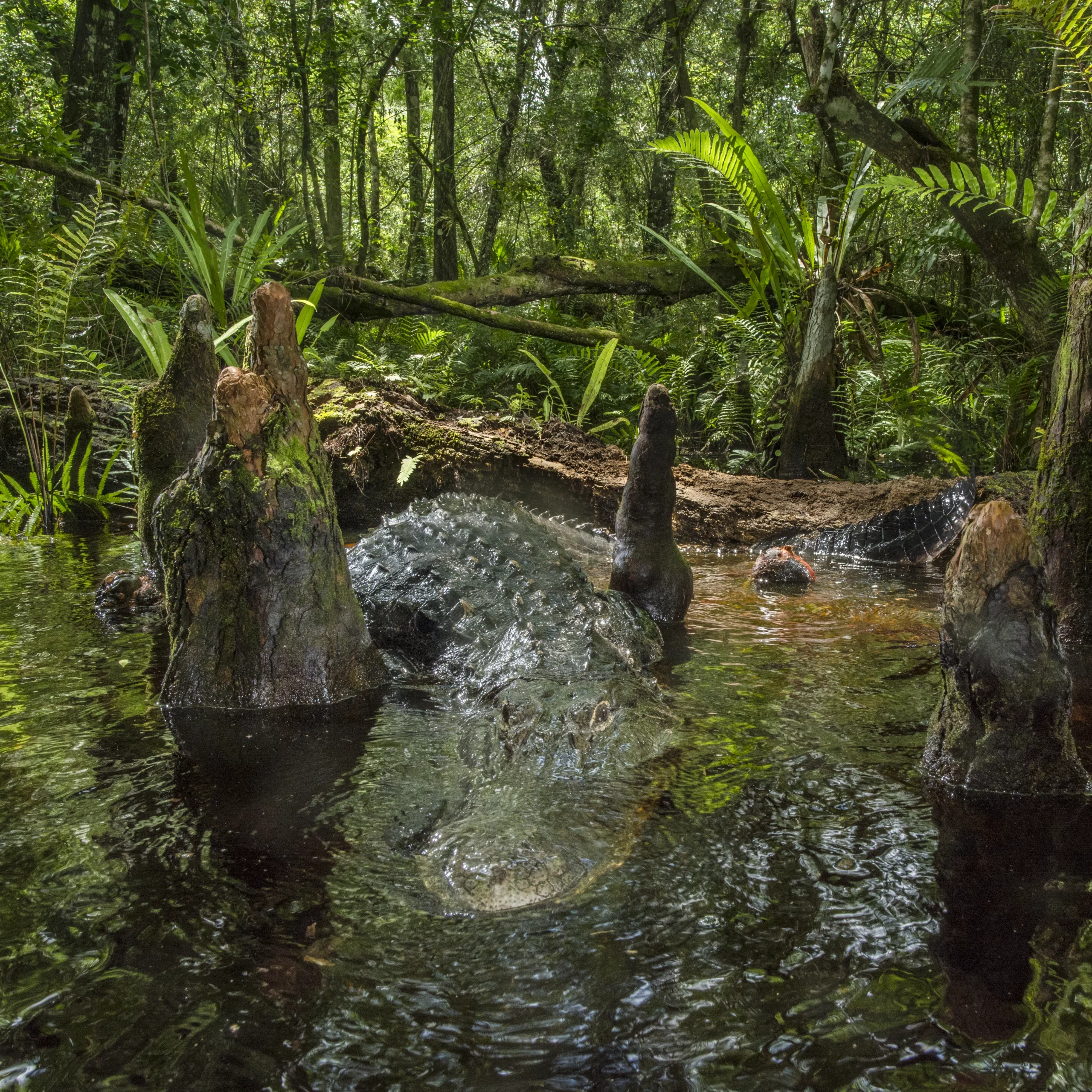by Carlton Ward Jr. | March 3, 2020
How This Photo Solved a Years-Long Mystery

I set up base camp at the Florida Panther National Wildlife Refuge on the edge of the Fakahatchee Strand. It was summer 2016, and I was just beginning my Path of the Panther project with the National Geographic Society. In an effort to photograph elusive panthers, I was building custom-made camera traps—professional DSLR cameras and multiple flashes, all in waterproof cases and triggered by invisible beams. The biologists who moved into the trailer next to mine were on a different mission: to study the rare ghost orchids that grow deep in the same swamps. The pollinator of these fairy-like flowers with spindly white petals has long evaded scientists. One of the biologists was using an off-the-shelf game camera to photograph the ghost orchid bloom. I knew there was little chance that camera would be fast enough to capture a speeding moth during a pollination visit that could last less than a second. My friend and fellow photographer Mac Stone had talked about camera trapping a ghost orchid a couple years prior, and the idea had seemed nearly impossible. But by 2016, I had some new tools, including a high-speed laser trigger that could change the game. So I took the challenge and configured a camera trap to try and photograph a moth.
The orchid researchers and I paddled the camera system into the heart of the flooded forest and pointed it at a bloom they had discovered. Hanging from the side of a pond apple tree, 8 feet off the ground and 5 feet above the water, were two delicate white flowers that might persist for two weeks, if we were lucky. Standing on my paddleboard, we hung the camera, flashes and laser triggers dangling above the water.
I knew the attempt was a bit crazy. Of the one in 10 ghost orchids that blooms each summer, approximately one in 10 gets pollinated. And I only had one camera trap pointed at one orchid. In the unlikely event that a moth would visit, the camera trap would then have to work, which is not a given in a hostile wetland with trigger tolerances so tight that the flower drooping by just 1 inch could throw off the aim. The bloom lasted for three weeks, and my camera captured hundreds of photos but only of raindrops and falling leaves.
My Path of the Panther project continued into 2017, giving me the chance to try again. That summer I moved the camera trap to multiple blooms and got a series of photos of a green moth on the lip of a flower. The moth was too small to be a pollinator, but the photos proved that the technology worked. By then, ghost orchid obsession had taken hold of me. In the summer of 2018, I dedicated more equipment to the orchid quest. I had learned a lot from two years of failures and was committed to one last try. Three orchids, six blooms, three cameras, 11 flashes and five laser triggers all hung above the murky water.
Three weeks later, when it happened, I couldn’t believe my eyes. As I stood on my paddleboard and scrolled through the photos, a huge orange moth filled the screen. The date was July 3. A couple days later, another moth was caught on camera, this time with a cluster of ghost orchid pollen visible on its head. It was the first-ever photograph of ghost orchid pollination, and even more exciting, it wasn’t of a giant sphinx moth, the species most of the orchid world assumed to be the flower’s sole pollinator, but rather a fig sphinx moth.

The photographs fueled me to keep going, and the discoveries just kept rolling in. During the summer of 2018, my cameras captured first-ever photos of five different species of sphinx moths probing and potentially pollinating ghost orchids. Three of the moths had ghost orchid pollen clearly visible on them, including the individual in this photo, a rustic sphinx moth, caught in the act of giving or receiving pollen. That summer, Mac Stone and biologist Peter Houlihan set another camera trap 50 feet up in a cypress tree at Corkscrew Swamp. They got the first-ever identifiable photo of a giant sphinx moth probing a ghost orchid and discovered new evidence that the giant sphinx might not actually be a pollinator after all! You can watch a short film about our team’s project and discoveries, Chasing Ghosts, on National Geographic’s YouTube channel.





